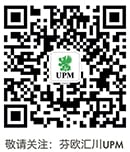We live in a world where the amount of waste entering the environment continues to increase. Over the last 65 years, plastic production has increased from 2 to 348 million tons per year. Unfortunately, only 14 percent of plastic packaging that enters the market globally is collected and recycled. This leads to losses of between 80 and 120 billion USD per year, according to the Ellen MacArthur Foundation.
We have seen a steady growth of plastic consumer packaging over the past few years and expect this to continue. On the flipside, however, this means increasing amounts of plastic waste. While plastic packaging has clear benefits, e.g. reducing food waste, light-weighting of packaging and durability, plastic waste that ends up in the environment creates dangers for human health and nature. Eliminating unnecessary plastic and developing a circular economy where packaging is collected and recycled instead of wasted is an important step towards a sustainable future.
How can we close the loop?
The scale and complexity of the problem call for a comprehensive approach. Making the transition from the current linear model to a circular economy requires the cooperation and involvement of stakeholders at every stage of a product's life cycle, from designers and manufacturers of packaging, brand owners, consumers and recyclers to business, NGOs and governments. Without the cooperation of stakeholders from different backgrounds, no solution will be effective.
The current linear economic model is based on the "take it, produce it, throw it away" principle – a one-way street that leads to ever-increasing amounts of waste. We obtain raw materials without limitations and produce and buy items that break easily, so we have to dispose of them. This leads to an ever-increasing demand for virgin raw materials, in turn leading to over-exploitation of natural resources, environmental degradation and increased greenhouse gas emissions. A circular economy works in such a way that the value of raw materials and products is preserved for as long as possible while also minimizing waste. This addresses two global challenges of our time: climate change and the growing scarcity of natural resources.
 The label, UPM Raflatac PP PCR, is manufactured from post-consumer recycled (PCR) plastic.
The label, UPM Raflatac PP PCR, is manufactured from post-consumer recycled (PCR) plastic.
The most important of all changes – a systemic change
In March of this year, the European Commission adopted one of the most important elements of the European Green Deal – the New Circular Economy Action Plan. It will propose mandatory requirements for recycled content and waste reduction measures for key products like packaging. In addition, an EU Directive aimed at reducing the use of disposable plastic products will inter alia require a minimum 30 percent share of recycled content by 2030.
The two biggest commitments undertaken by Poland are the so-called “waste package” which came into force on 4 July 2018 and the so-called “Single-Use Plastics Directive” approved by the European Parliament in March 2019.
Follow me to the bin
Innovative actions addressed to consumers are also important. In Copenhagen, in order to combat littering in urban spaces, green footprints were placed on the pavement, directing people to the nearest trash can. This has led to a reduction in litter of over 45 percent.
In Poland, the residents of the city of Ciechanow received barcode stickers for their waste bags. Scanning the barcode enabled them to open special containers. The containers were equipped with scales and special sensors, recognizing whether the waste had been sorted in a proper way and by which residents. Correctly segregating the waste was rewarded with prizes like concert tickets. Thanks to this system, the waste collector was also informed when the containers were full and ready for collection. After the three-month pilot project, the number of households segregating waste increased by as much as 90percent.
Intersectoral cooperation in the pursuit of eliminating the generation of waste and achieving a circular economy model is essential.
Tackling the plastic waste challenge through collaboration
Stepping into a sustainable future is not possible without strong business engagement and collaboration. UPM Raflatac is a partner of the Ellen MacArthur Foundation’s network and a signatory to the New Plastics Economy Global Commitment to support the transition to a circular economy. The aim is to provide brands with labels that enhance the recyclability of packaging, increase the use of recycled content and offer customers the chance to recycle their label waste with our in-house RafCycle™ by UPM Raflatac program.
UPM Raflatac has collaborated with WWF Poland since 2012 on activities toward promoting a circular economy along with restoring natural river ecosystems in Poland to create awareness about the importance of rivers for maintaining biodiversity. Read more about our collaboration in our blog »
Learn how we are supporting our clients on their way to the green recovery
The article was written in cooperation with WWF Poland
Authors: Vera Bartsch (UPM Raflatac), Magdalena Wieczerzyńska (WWF Poland), Antonina Konarzewska (WWF Poland)
